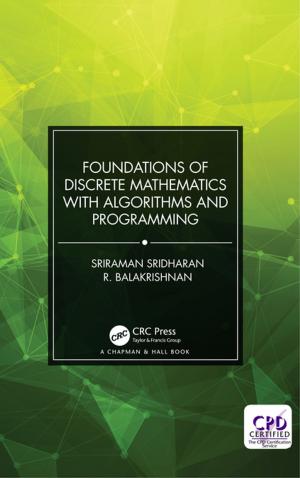Techniques of Crime Scene Investigation
Nonfiction, Reference & Language, Law, Forensic Science, Criminal law, Social & Cultural Studies, Social Science| Author: | David R. Fisher, Barry A. J. Fisher | ISBN: | 9781466507401 |
| Publisher: | CRC Press | Publication: | August 23, 2012 |
| Imprint: | CRC Press | Language: | English |
| Author: | David R. Fisher, Barry A. J. Fisher |
| ISBN: | 9781466507401 |
| Publisher: | CRC Press |
| Publication: | August 23, 2012 |
| Imprint: | CRC Press |
| Language: | English |
"If you are a Professional Crime Scene Investigator, then this book is a must have for both your personal forensic reference library, as well as your office reference library."
—Edward W. Wallace Jr., Certified Senior Crime Scene Analyst, Retired First Grade Detective, NYPD
"Techniques of Crime Scene Investigation is a well-written, comprehensive guide to the investigative and technical aspects of CSI. The textbook is an educational standard on the theory and practice of crime scene investigation and includes many informative casework examples and photographs. On reading this book, students, entry-level personnel, and experienced practitioners will have a better understanding of the strengths and limitations of forensic science in its application to crime scene investigations."
—Professor Don Johnson, School of Criminal Justice and Criminalistics, California State University, Los Angeles
The application of science and technology plays a critical role in the investigation and adjudication of crimes in our criminal justice system. But before science can be brought to bear on evidence, it must be recognized and collected in an appropriate manner at crime scenes. Written by authors with over 50 years of combined experience in forensic science, Techniques of Crime Scene Investigation examines the concepts, field-tested techniques, and procedures of crime scene investigation. Detectives, crime scene technicians, and forensic scientists can rely on this updated version of the "forensics bible" to effectively apply science and technology to the tasks of solving crimes.
What’s New in the Eighth Edition:
-
The latest in forensic DNA testing and collection, including low copy number DNA
A new chapter on digital evidence
New case studies with color photographs
End-of-chapter study questions
Practical tips and tricks of the trade in crime scene processing
"If you are a Professional Crime Scene Investigator, then this book is a must have for both your personal forensic reference library, as well as your office reference library."
—Edward W. Wallace Jr., Certified Senior Crime Scene Analyst, Retired First Grade Detective, NYPD
"Techniques of Crime Scene Investigation is a well-written, comprehensive guide to the investigative and technical aspects of CSI. The textbook is an educational standard on the theory and practice of crime scene investigation and includes many informative casework examples and photographs. On reading this book, students, entry-level personnel, and experienced practitioners will have a better understanding of the strengths and limitations of forensic science in its application to crime scene investigations."
—Professor Don Johnson, School of Criminal Justice and Criminalistics, California State University, Los Angeles
The application of science and technology plays a critical role in the investigation and adjudication of crimes in our criminal justice system. But before science can be brought to bear on evidence, it must be recognized and collected in an appropriate manner at crime scenes. Written by authors with over 50 years of combined experience in forensic science, Techniques of Crime Scene Investigation examines the concepts, field-tested techniques, and procedures of crime scene investigation. Detectives, crime scene technicians, and forensic scientists can rely on this updated version of the "forensics bible" to effectively apply science and technology to the tasks of solving crimes.
What’s New in the Eighth Edition:
-
The latest in forensic DNA testing and collection, including low copy number DNA
A new chapter on digital evidence
New case studies with color photographs
End-of-chapter study questions
Practical tips and tricks of the trade in crime scene processing















